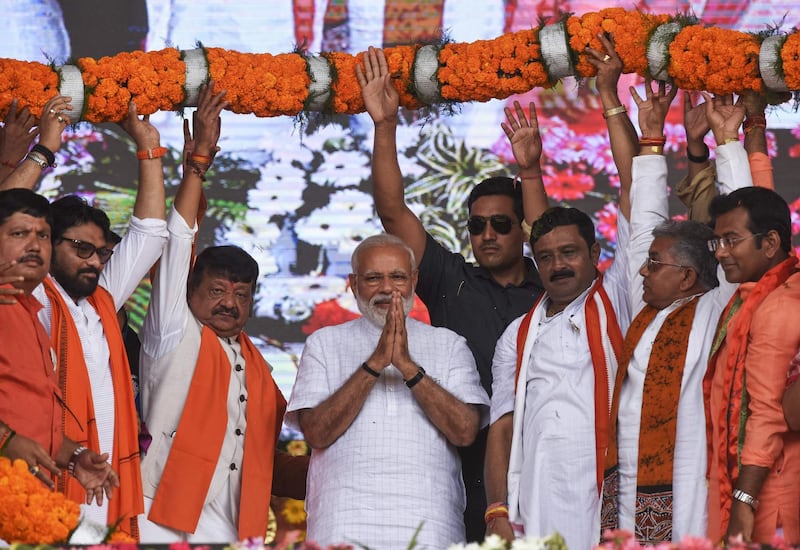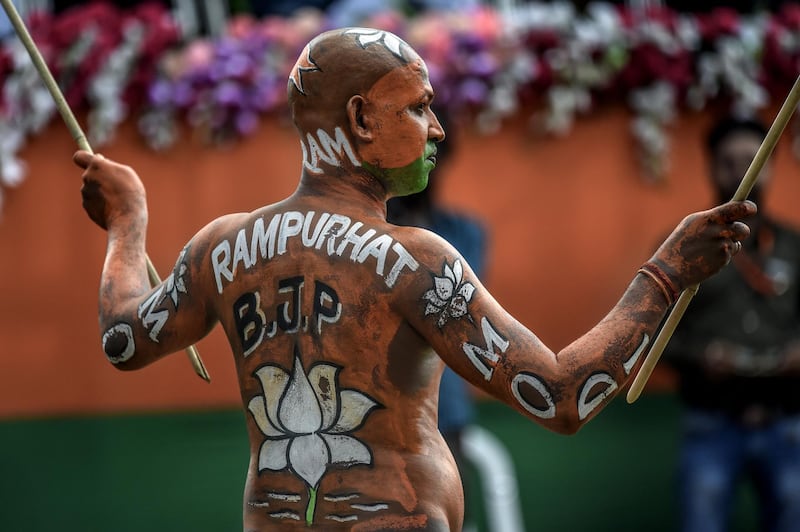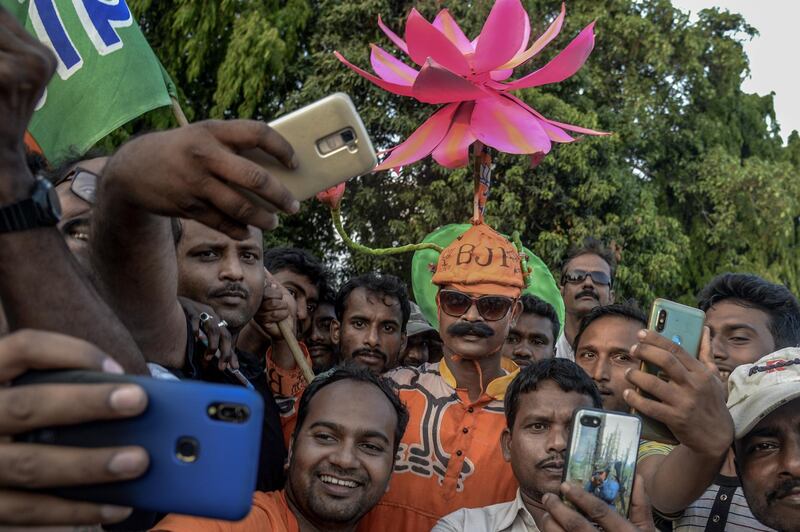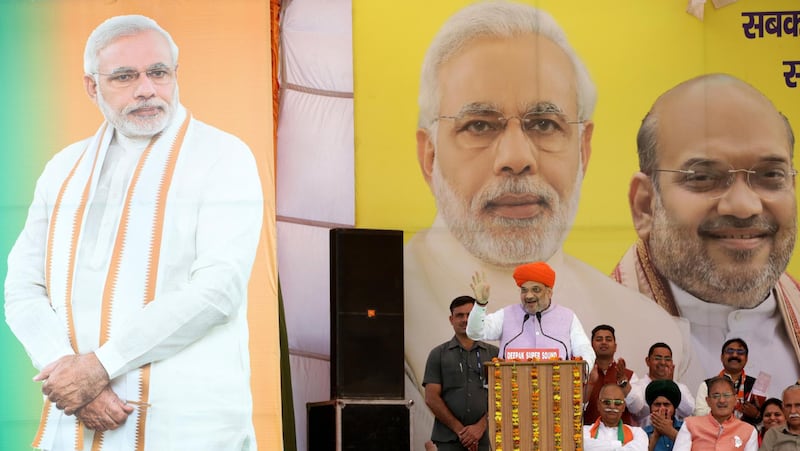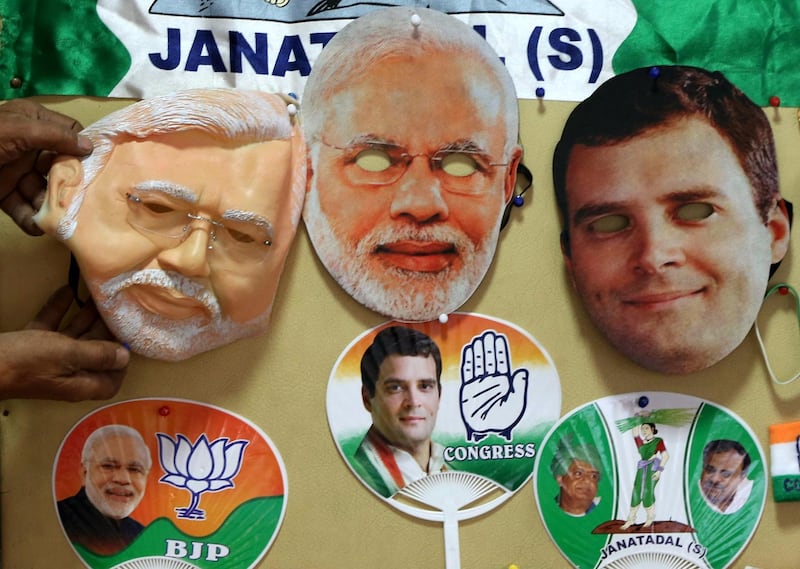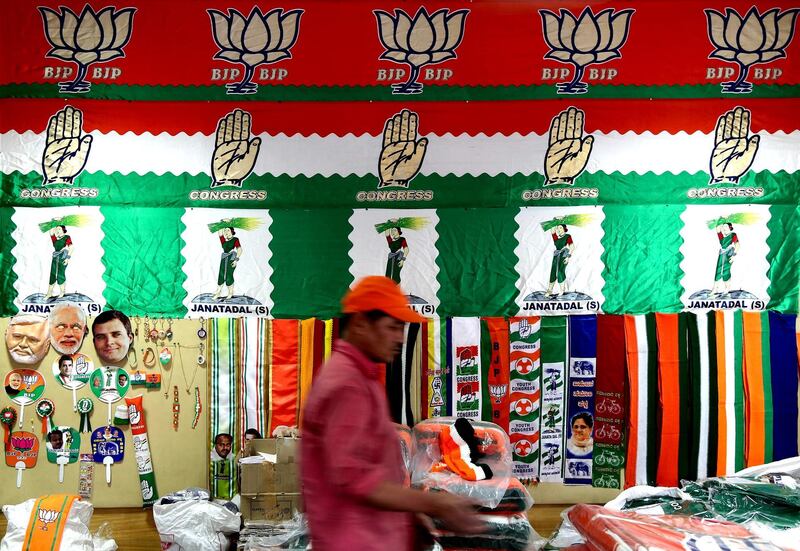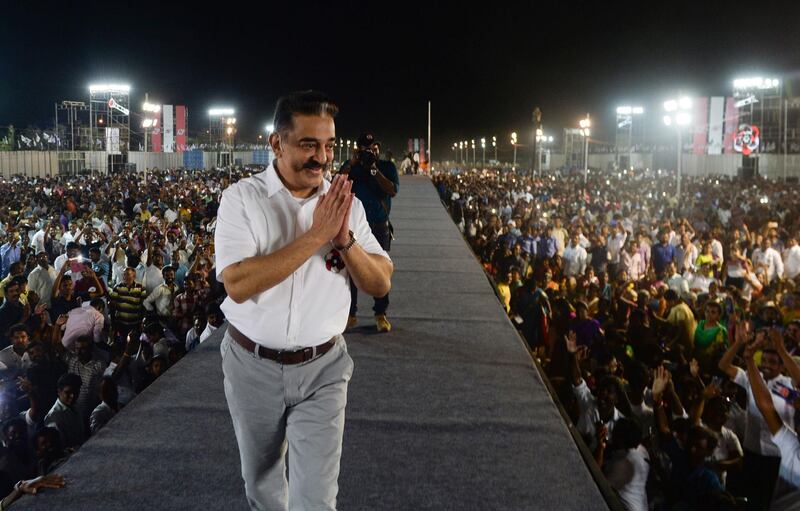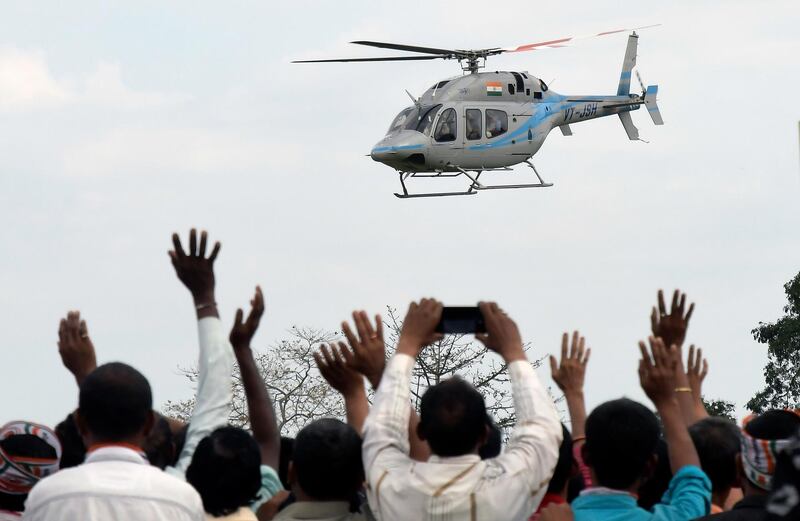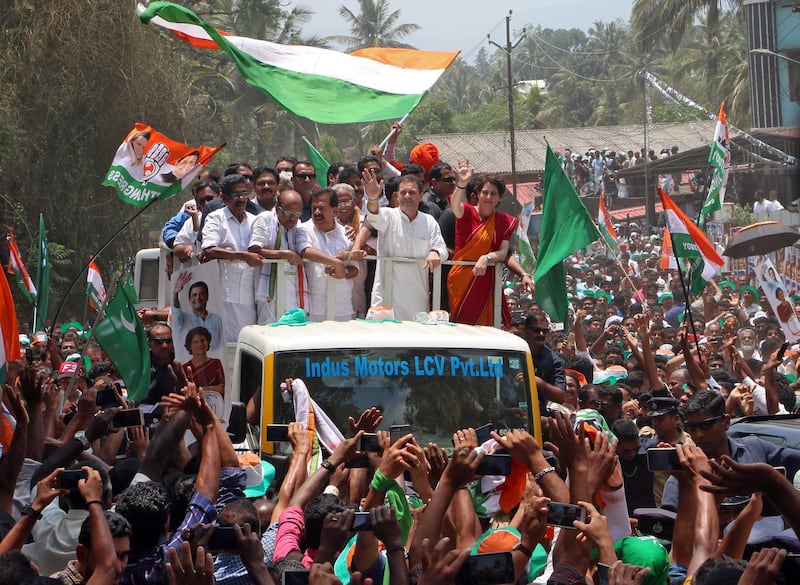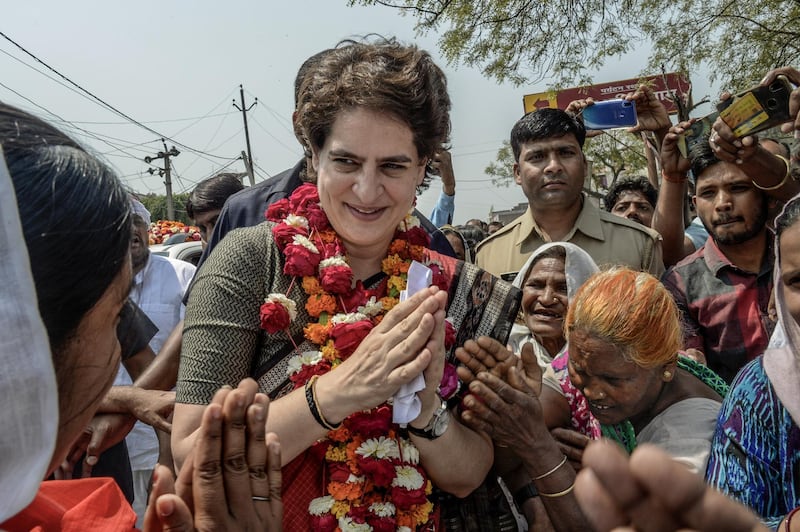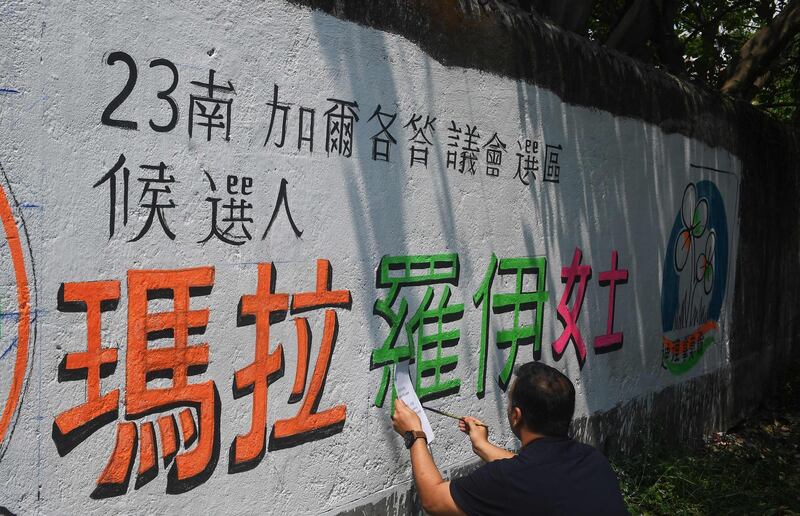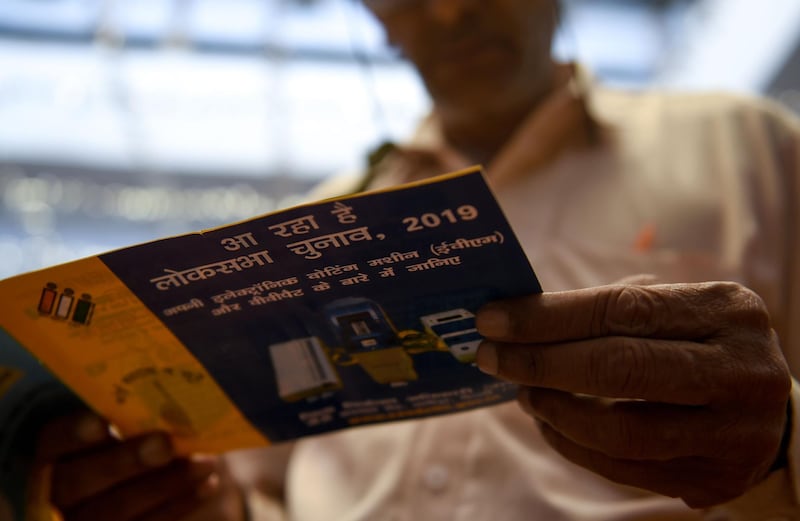Indians will begin electing a new Lok Sabha, or lower house of parliament, on April 11 in a mammoth exercise that will take more than a month to complete because of the size of the population and the country.
With about 900 million people eligible to vote, the resources needed in terms of election personnel, security and voting materials is far too large to hold the polls at one go, so the Election Commission of India sets separate dates for different parts of the country to vote.
The 2019 election has been divided into seven stages, with the final round of voting on March 19.
How many representatives are Indians electing?
The Lok Sabha has 545 seats, but two of these are reserved for the Anglo-Indian community – people of Indian-European ancestry – and filled by presidential nomination.
Voters in Arunachal Pradesh, Andhra Pradesh, Odisha and Sikkim will also be electing their state legislatures.
The upper house of parliament, or Rajya Sabha, is elected separately by members of state legislatures.
What are the polling dates?
The election has been broken up as follows:
April 11: 91 constituencies in 20 states
April 18: 97 constituencies in 13 states
April 23: 115 constituencies in 14 states
April 29: 71 constituencies in 9 states
May 6: 51 constituencies in 7 states
May 12: 59 constituencies in 7 states
May 19: 59 constituencies in 8 states
When will the results be known?
The counting of votes will begin on May 23, four days after the last round of voting, and is expected to be completed on the same day.
What are the key issues in the election?
The lack of jobs and rising prices are among the top concerns cited by voters in opinion surveys. About 10 million youth enter the labour market each year but the rate of job creation is far short of this.
Farmers have been calling for more government support in a country where most of the population is dependent on agricultural income.
Corruption is another issue that Indians cite as a major worry, while national security has come to the fore after a terrorist attack killed 40 troops in Kashmir in February and triggered a tense confrontation with Pakistan.
Who will challenge Narendra Modi and the BJP?
The Bharatiya Janata Party of Prime Minister Narendra Modi and its partners in the National Democratic Alliance are widely expected to win the election again, but not by the landslide they achieved in 2014 when the BJP even secured a majority in its own right.
The Congress party, headed by Rahul Gandhi, which has won 10 of India's past 15 elections either outright or in an alliance, is seeking a return to power after being humiliated in 2014. However, there is third force challenging to form the next government in the form of a "mega-coalition" of smaller parties, including former rivals, that have come together with the goal of unseating Mr Modi.
Who is eligible to vote?
All Indian citizens who are at least 18 years old can take part in the election, provided their name is on the electoral rolls. Indians living abroad must return to the country to cast their ballot in the constituency in which they are registered.
Voters must present their voter ID cards or some other approved means of identification such as a passport, national ID card or driver's licence.
Who can stand for election?
Candidates must be Indian citizens who are at least 25 years old and listed on the electoral rolls. A candidate can stand as a representative of a registered political party or as an independent. Candidates have to provide a security deposit of 25,000 rupees which will be refunded provided they receive more than one-sixth of the valid votes cast in their constituency.
What is the pre-election procedure?
Filing of nominations and finalisation of the list of candidates will be completed in each constituency according to the date of polling. The election commission rules provide for a campaign period of not less than 13 days, with campaigning to end 48 hours before the time set for close of polling. Campaign spending is limited to Rs5.4 million rupees (Dh288,000) per candidate in smaller parliamentary constituencies and 7m rupees in larger constituencies.
How is the voting conducted?
Each polling station is equipped with a standalone, battery-powered electronic voting machine that is not connected to any network. The voting machine displays a list of the candidates' names and symbols, with a corresponding row of buttons for the voter to press to register their choice. Each machine can record a maximum of 2,000 votes, but the number of voters assigned to each polling station generally does not exceed 1,400, according to the election commission.
Which are the key states?
The northern state of Uttar Pradesh is India's most populous, with about 200 million residents, and sends 80 MPs to parliament, more than any other state.
Past elections have shown that the most successful party in Uttar Pradesh generally wins the most seats nationwide.
Other states that will prove crucial to winning the election are Maharashtra, which accounts for 48 Lok Sabha seats, West Bengal (42), Bihar (40) and Tamil Nadu (39) seats.
